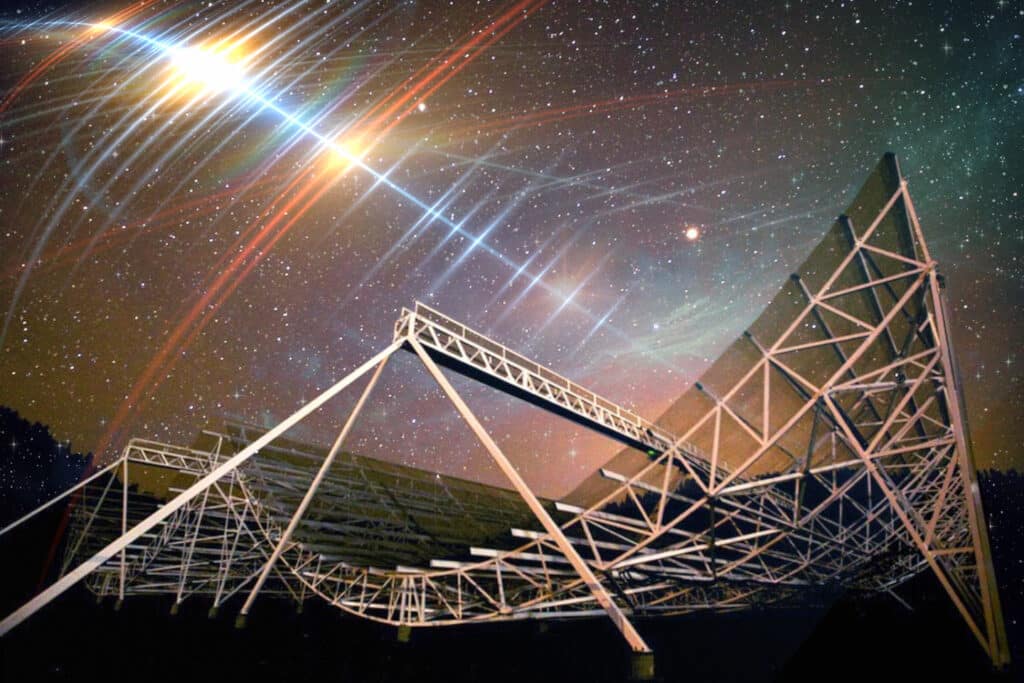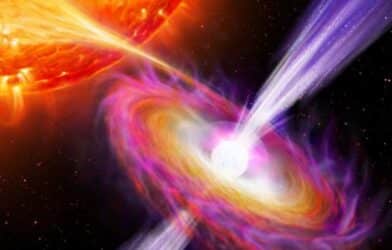
As NASA’s James Webb Space Telescope unlocks mysteries of the universe, astronomers at the Massachusetts Institute of Technology are investigating a mystery of their own after detecting a radio “heartbeat” billions of light-years from Earth. Researchers say the fast radio burst (FRB) is flashing with surprising regularity — for up to three seconds — which is about 1,000 times longer than the average FRB.
Fast radio bursts typically last for a few milliseconds, but this particular FRB — dubbed FRB 20191221A — repeats every 0.2 second in a clear periodic pattern, similar to a heartbeat. It’s currently the longest lasting-FRB, with the clearest periodic pattern, detected to date.
“There are not many things in the universe that emit strictly periodic signals,” says Danielle Michilli, a postdoc in MIT’s Kavli Institute for Astrophysics and Space Research, in a statement. “Examples that we know of in our own galaxy are radio pulsars and magnetars, which rotate and produce a beamed emission similar to a lighthouse. And we think this new signal could be a magnetar or pulsar on steroids.”
Both pulsars and magnetars are types of neutron stars, which are extremely dense, rapidly spinning collapsed cores of giant stars.
The Canadian Hydrogen Intensity Mapping Experiment, or CHIME, detected FRB 20191221A on Dec. 21, 2019. CHIME is “an interferometric radio telescope consisting of four large parabolic reflectors that is located at the Dominion Radio Astrophysical Observatory in British Columbia, Canada,” researchers explain.
CHIME picks up radio waves emitted by hydrogen in the very earliest stages of life.
The signal from FRB 20191221A consisted of a four-day window of random bursts that repeated every 16 days. Usually, FRBs give off ultrabright bursts of radio waves that last for a few milliseconds before blinking off.
“It was unusual,” Michilli recalls the day this FRB was discovered. “Not only was it very long, lasting about three seconds, but there were periodic peaks that were remarkably precise, emitting every fraction of a second — boom, boom, boom — like a heartbeat. This is the first time the signal itself is periodic.”
The team of MIT astronomers found similarities with this fast radio burst and emissions from radio pulsars and magnetars in our own galaxy. However, FRB 20191221A is more than 1 million times brighter than our own galactic pulsars and magnetars. Michilli believes “the luminous flashes may originate from a distant radio pulsar or magnetar that is normally less bright as it rotates and for some unknown reason ejected a train of brilliant bursts, in a rare three-second window that CHIME was luckily positioned to catch.
“CHIME has now detected many FRBs with different properties,” Michilli continues. “We’ve seen some that live inside clouds that are very turbulent, while others look like they’re in clean environments. From the properties of this new signal, we can say that around this source, there’s a cloud of plasma that must be extremely turbulent.”
MIT astronomers are hoping to catch more bursts from this FRB.
“This detection raises the question of what could cause this extreme signal that we’ve never seen before, and how can we use this signal to study the universe,” says Michilli. “Future telescopes promise to discover thousands of FRBs a month, and at that point we may find many more of these periodic signals.”
The study was published in the journal Nature.












